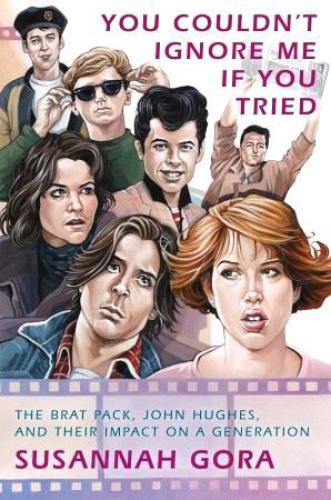
You Couldn't Ignore Me If You Tried
The Brat Pack, John Hughes, and Their Impact on a Generation
کتاب های مرتبط
- اطلاعات
- نقد و بررسی
- دیدگاه کاربران
نقد و بررسی

January 11, 2010
The phrase was coined by David Blum in the headline “Hollywood’s Brat Pack,” heralding his cover story for the June 10, 1985, issue of New York
magazine with its cover photo of Emilio Estevez, Rob Lowe, and Judd Nelson. The label stuck, Gora notes, and extended to describe other actors: Andrew McCarthy, Demi Moore, Ally Sheedy, Molly Ringwald, and Anthony Michael Hall. A former editor at Premiere
, Gora guides the reader through the creation of the teen cinema of the 1980s, described by the American Film Institute as “the cultural phenomenon which helped make us what we are today.” To recall the era, she interviewed two dozen actors, plus the directors and producers behind the Brat Pack’s memorable movies, including The Breakfast Club
, Fast Times at Ridgemont High
, Sixteen Candles
, Pretty in Pink
, St. Elmo’s Fire
and Ferris Bueller’s Day Off
. As Gora sees it, “The films changed the way many young people looked at everything from class distinction to friendship, from love and sex to fashion and music.” Writer-director John Hughes’s ability to capture adolescent angst is highlighted. The 1980s youth films maintain their popularity on TV and DVDs, and Gora gives them near-encyclopedic, comprehensive coverage.

February 12, 2010
Former Premiere editor Gora pays tribute to the late, great director and his muses in this excellent study of John Hughes's films (e.g., The Breakfast Club) and their lasting influence. Gora briefly examines Hughes's childhood and film influences, using them as a springboard to his career. Drawing mainly on her own interviews with many of the stars, producers, and others associated with Hughes's work, the author contends that these films had an influence on a generation that went well beyond their immediate impact. She discusses each of Hughes's films individually, including interviews with numerous players associated with each film. It is this detail and the liberal use of first-person narratives that make this book both enjoyable and valuable. Verdict Gora obviously knows her subject expertly but writes in language that sounds more like a fan than an academic. This should appeal to film buffs and to the generation who grew up on Hughes's films-many readers will appreciate the nostalgia.-Craig Shufelt, Fort McMurray P.L., Alta.
Copyright 2010 Library Journal, LLC Used with permission.

February 15, 2010
Concentrating on the making of such seminal films as Sixteen Candles, The Breakfast Club, St. Elmos Fire, Pretty in Pink, Some Kind of Wonderful, Say Anything, Home Alone, and, of course, Ferris Buellers Day Off, Goras celebration of writer-director John Hughes (19502009) tends to be exhaustive and often exhausts. Gora cites the New York Times A. O. Scott on Hugheshe was our Godardand Roger Eberts characterization of him as the philosopher of adolescence to orient her essay exploring what she calls cine-sociology, the concrete sociological impact that movies can have on our lives. She discusses the origin of the sobriquet Brat Pack, offers biographical portraits of Hughes and many of the actors most associated with his movies, discusses the music of the so-called Brat Pack films (it was a crucial factor in their success), and considers how the Brat Pack films changed a generation. Although probably too self-important for its own good, this is still a must for Hughes admirers and students of American pop culture.(Reprinted with permission of Booklist, copyright 2010, American Library Association.)

























دیدگاه کاربران